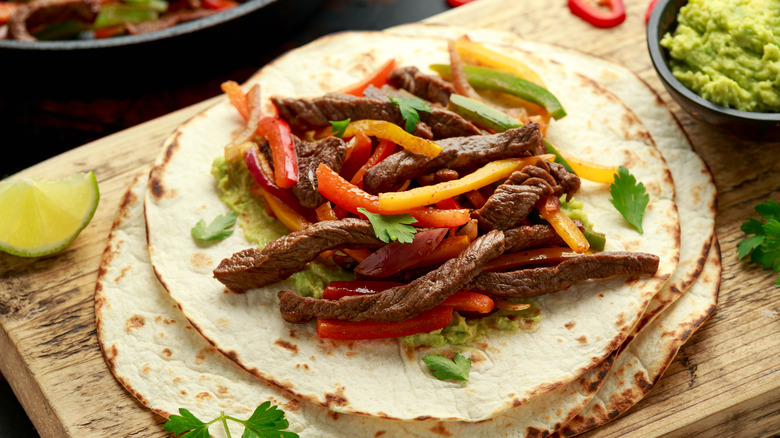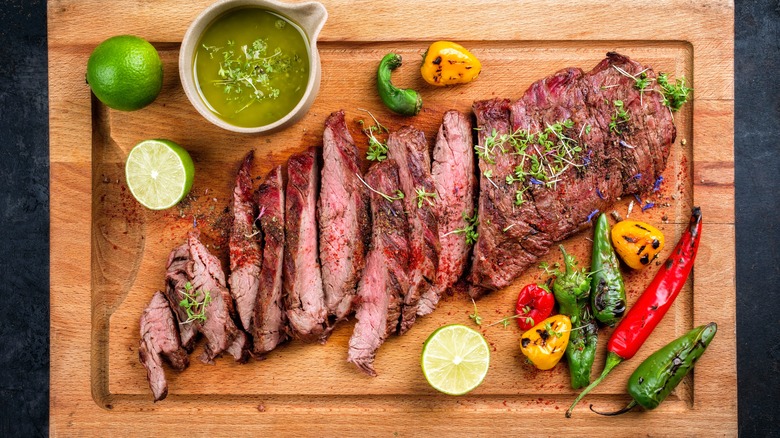Why It's Crucial To Properly Cut Steak For Fajitas
Steak fajitas are one of those "easy" dinners that's also easy to mess up. On the surface, it seems like it should be the perfect quick meal — a bunch of seared veggies and steak, mixed together and wrapped in a tortilla. How could that not be delicious? But fajitas can easily turn into a disappointing pile of wet, bland filler. Unfortunately, no matter how easy something is, there are always a few small details that can trip you up and turn into big problems. The vegetables can be soggy, greasy, under-seasoned, or all three, but worst of all is the all-too-common tough, overcooked steak.
Getting your steak tender and chewable is essential to a good fajita because of how you're eating it. This isn't a taco with small bite-sized chunks of steak, fajitas are generally served with bigger strips, and you need to be able to bite through them without pulling half the filling out of the tortilla and onto your face. A lot of that tenderizing will come from the actual process of cooking; a marinade and a quick, high-heat sear go a long way in making sure your steak is edible, but there are other places you can make mistakes, too. One that is easy to overlook is how you cut the steak for your fajitas. Even just getting that wrong could mess up your meal.
Cut the steak for your fajitas against the grain
If you want tender bites of steak in your fajita, or pretty much anytime you cook the tougher, more affordable cuts like hanger and skirt steak that fajitas use, you want to slice your meat against the grain. Your steak is made up of long, tough muscle fibers running through the entire thing, and even in a well-cooked steak, they can be difficult to bite through. The solution is simple but essential: You need to cut your meat across these fibers, or "across the grain," instead of parallel to them. This will break them up and leave each slice of steak with only a thin bit of muscle instead of an unbroken, chewy mass running through the whole strip.
How can you make sure you're doing this right? Well thankfully, the grain on tough cuts of steak is pretty visible, and you should see quite a few thin lines, almost like tiny indents, running parallel to each other across your steak. You'll often see thin lines of fat running in the same direction. It's then as simple as slicing through those lines after the steak is cooked. If you are using a more tender cut for your fajitas, those lines aren't as visible, but you also won't need to worry about slicing against the grain as much either. Pair this cutting method with a well-cooked, tenderized steak, and you'll never suffer through tough fajitas again.

